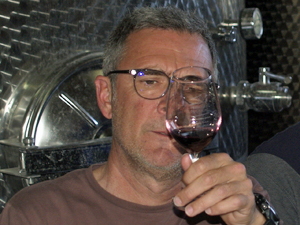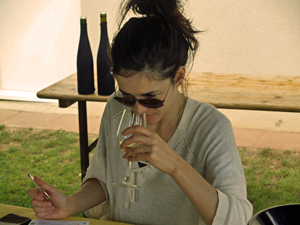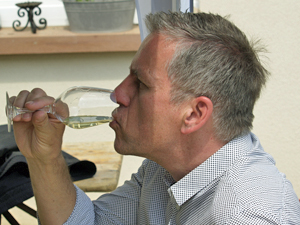The key steps involved in wine tasting
- Categories :
- Gifts
- Wine
- Wine News
- Wine Making
- Enjoying Wine
- Gourmet Odyssey
Step 1 : The look
The first step is to place your glass of wine above a clear white surface, ideally in the light. You’ll be able to judge how clear it is based on the number of particles that are held in suspension, and gauge its level of acidity. If you can see thick tears form on the inside of the glass, it’s a sign that the wine is full-bodied, and inversely if the tears are finer and flow more quickly, the wine is likely to be more acidic.

You can also pick up some clues regarding the wine’s age to indicate whether the wine is likely to be young or old. For red wines, the colour changes from bright red or purple for the youngest wines to a rusty colour for the older ones. And for the white wines, from pale yellow or even green to a deep amber colour.
Step 2 : The nose
This phase is done in two parts. Without moving the glass, place your nose over the glass and take in a big sniff. This is known as the first nose. Then swill the wine carefully around the glass a few times to oxygenate the wine and liberate the less volatile aromas before sniffing again. This is known as the second nose. Often, there is a big difference between the first and second noses.

There are different types of aromas; primary, secondary, and tertiary aromas. The primary aromas come from the grapes themselves, and there are a wide range of smells such as floral ones (acacia, honeysuckle, jasmin, rose, lilac etc.), fruity aromas (pineapple, apple, lemon, mango, peach, apricot, raspberry, blackcurrant, blueberry, etc.), vegetal aromas (aniseed, thyme, grass, pepper, fennel etc.), or spicy aromas (cinnamon, pepper, nutmeg, etc.)
The secondary aromas come from the fermentation, and we can find three distinct types. There are those that are produced by the fermentation process such as brioche, yeast or biscuit. There are also the milky aromas such as butter, yoghurt or milk, and the alcoholic aromas such as boiled sweets, nail polish, or banana.
The tertiary aromas develop during the ageing process, several months after the harvest. Oak barrels give woody aromas such as cedar, oak, vanilla, and eucalyptus, spicy aromas such as pepper, cinnamon, and liquorice, or toasted aromas such as toast, coffee, grilled almonds, or tabaco.
Step 3 : The taste

When finally getting to the tasting stage, take a small amount of wine in the mouth, breath in a little air between the lips, swill the wine around the mouth, then breath out of the nose to let the taste and aromas to develop, before swallowing the wine or spitting it out.
There are three moments to take note of:
- The attack. What impression does the wine give the moment you take it into your mouth? It can be weak, strong, or intense.
- The mid-palate. Analyse the texture of the wine and the aromas. Is it smooth, acidic, are there any new aromas that have developed since step 2?
- The finish. Once you’ve swallowed the wine, what sensation prevails, and how long does the taste last? If there are lots of tannins present it will have a longer finish, and a wine that is fruitier is likely to have a shorter finish.
Using our senses is very important in tasting wine, and by following these stages, you will be able to comment on a wine more easily, and to compare it with others. Wine-tasting skills improve with practice and remembering the characteristics of the wines that you have previously tasted. You can always use a notebook to write down your thoughts. And remember the two most important things when tasting wine. It starts with “I like the wine, or I don’t”. And secondly, we all have our own perceptions of smell and taste, and so it is remains very subjective!
To develop your wine tasting skills further, you can participate in a Vinification Experience Day and learn directly from the winemaker and a Gourmet Odyssey wine expert. Each of the partner wineries are organically certified, and the wine-making course teaches you about all that happens in the cellar from the harvest, right up until the moment when the wine is ready for drinking During the day, you’ll see how the fermentation phases change the structure of the wine, participate in a wine-tasting workshop to help you develop your senses, taste wines that are in the ageing process, and get involved in blending different wines.
Comments
No comments.




